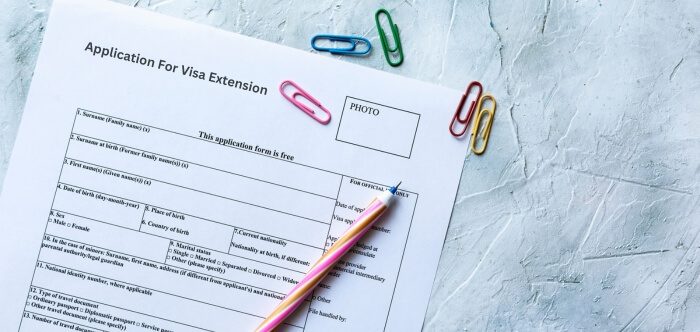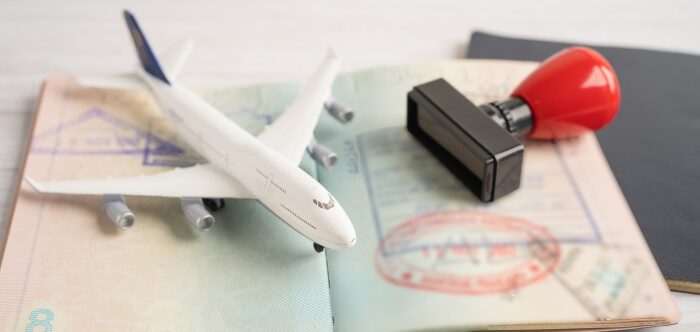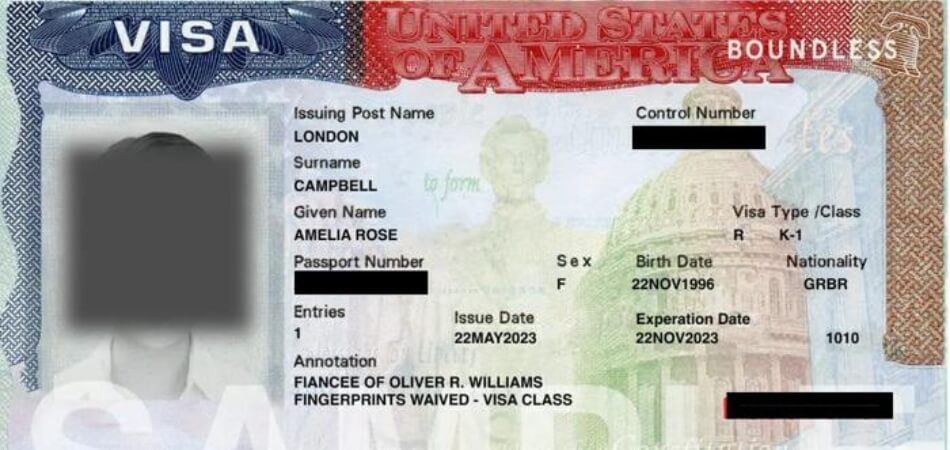Are you an international traveler or an expatriate planning to extend your stay in the United States? The process of extending your visa can be both exciting and daunting, with numerous questions swirling in your mind. One of the most pressing concerns is undoubtedly, “How much is visa extension in USA?”
Well, the cost of a Visa Extension in the USA varies depending on the type of visa and processing fees. On average, it can range from $370 to $540, but it’s essential to check with the U.S. Citizenship and Immigration Services (USCIS) for the most up-to-date fees.
In this blog, we’ll explain the cost of extending your USA visa. We’ll cover fees, visa types, and updates. Whether you’re a student, professional, or visitor, knowing these costs is vital for a worry-free stay. Let’s unravel the visa extension expenses and empower your decisions.
What is a Visa Extension?
Visa regulations and policies allow visitors to prolong their stay in a foreign country. Understanding visa extensions ensures compliance with immigration rules. Timely actions can prevent undesired legal complications.
A visa extension refers to the formal process of requesting additional time beyond the original duration granted on an entry visa. Typically granted by immigration authorities, this procedure allows foreigners to lengthen their stay without violating local laws. The reasons for seeking an extension can vary, including tourism, business, health issues, or unforeseen circumstances.
To apply for a visa extension, individuals must often submit specific documents and provide a valid reason. The required paperwork might include current visa details, proof of finances, and sometimes health insurance coverage. It’s essential to apply before the current visa expires to avoid legal repercussions and potential bans from re-entry.
Remember, not all visas are extendable. Understanding the type of visa one holds and the associated rules is crucial. Researching and seeking advice from local immigration offices or legal professionals ensures proper adherence to regulations.
Types of Visas and Extensions
Understanding the various types of visas and extensions in the United States is essential for immigrants. Each visa category serves specific purposes, and extensions allow individuals to prolong their stay in the country.
Tourist Visas
Tourist visas permit short-term visits for leisure purposes. They typically don’t allow work or long-term stays. Extensions might be possible, depending on the country, but often have limits. Proper documentation and genuine reasons are essential for successful extension applications.
Business Visas
Business visas cater to professionals attending meetings, conferences, or other work-related events. Duration can vary but often excludes permanent employment. Extensions are feasible in many cases, especially when ongoing business necessities arise. Adequate documentation showcasing the business purpose can support extension applications.
Student Visas
Student visas are designated for individuals pursuing education in a foreign nation. They’re often linked to the course duration. In case of course extensions or further studies, visa extensions might be possible. However, consistent academic performance and enrollment proof are vital.
Work Visas
For those seeking employment abroad, work visas are essential. They’re linked to job contracts or employment duration. If one’s job contract is renewed or extended, visa extensions can often be secured. Employers usually assist in this process, providing necessary paperwork.
Transit Visas
Transit visas allow travelers a brief stay while transiting through a country. Their durations are short, usually a few days. Extensions for transit visas are rare since they’re meant for short stops. If longer stays are needed, other visa types might be more appropriate.
Family and Spouse Visas
These visas let family members join relatives in a foreign country. They can be for short visits or longer reunions. Extensions depend on the host country’s rules and the relationship’s validity. Ensuring all relationships are genuine and documented can aid in extension processes.
In sum, visa types and their extension possibilities are vast and intricate. Adequate research and professional advice can aid in seamless transitions between countries and prolonging stays where required.
How Much Is Visa Extension in USA?
The process of extending one’s visa in the United States can be both intricate and financially demanding. While considering “How Much Is Visa Extension in USA?”, various factors come into play. Here’s a detailed overview of costs and related nuances in the USA visa extension process.
Application Fees
The primary cost is the application fee. U.S. Citizenship and Immigration Services (USCIS) often revises fee structures. At my last update, Form I-539, used for extensions, had an associated fee. Always check the USCIS website for the latest fees.
Biometric Services Fee
Certain applicants must undergo biometrics procedures. This involves fingerprinting and sometimes a photograph. An additional biometric services fee is charged for this. The exact amount can vary, so consulting the USCIS site is advisable.
Additional Expenses
Besides the main application fee, other costs can arise. These might include legal consultation fees, document translation, or courier charges. Remember, hiring an immigration attorney can lead to additional, yet sometimes invaluable, expenses. Each case’s complexity determines the total additional costs.
Fee Waivers
In specific situations, applicants might qualify for a fee waiver. USCIS offers these based on financial hardship criteria. To apply for a waiver, the correct form must be submitted. However, receiving a waiver isn’t guaranteed and depends on individual circumstances.
Premium Processing
For expedited processing, a premium fee can be paid. This ensures faster application review by USCIS. However, premium processing isn’t available for all visa categories. Check eligibility and associated costs on the official website.
Consequences of Denied Applications
If a visa extension application is denied, the fee isn’t refundable. This makes understanding the process and requirements essential. Consulting professionals or ensuring thorough research minimize financial losses. Remember, staying beyond visa expiration without approval can have financial and legal repercussions.
Understanding the expenses involved in extending your visa is essential for effective planning. Keep in mind that fees and regulations may change over time, so it’s advisable to check the most up-to-date information with the U.S. Citizenship and Immigration Services (USCIS) before applying for a visa extension.
The Application Process for a Visa Extension
Extending your visa in the USA is a systematic process that allows you to prolong your stay legally. Whether you’re a student, a worker, or a visitor, understanding the application process is crucial. Here’s a step-by-step guide to help you navigate the application process seamlessly.
Step-1. Determine Eligibility
Before initiating the process, confirm your eligibility. Most countries have specific requirements for visa extension, such as valid reasons or a clean immigration record. It’s essential to understand these prerequisites to ensure a successful application. Consulting the country’s immigration website or professionals can offer clarity.
Step-2. Gather Required Documents
Prepare all essential documentation for your application. This often includes your current visa, passport, financial statements, and any other relevant proofs. Ensuring that all documents are accurate and up-to-date will help streamline the application process. In some cases, certified translations might be required.
Step-3. Complete the Application Form
Procure the appropriate application form for visa extension. This can usually be found on the official immigration website of the host country. Fill out the form diligently, avoiding any inaccuracies or omissions. A carefully completed form minimizes the chances of rejection or delays.
Step-4. Pay the Necessary Fees
Each visa extension application typically comes with associated fees. Ensure that you pay the correct amount, keeping receipts as proof. Some countries offer online payment methods, while others might require bank drafts or money orders. Always double-check the payment process to prevent issues.
Step-5. Submit the Application
Once all documents are ready and fees paid, submit the application. This could be done online, by mail, or in-person, depending on the country’s system. It’s a good practice to keep copies of everything you send. Tracking your application, if possible, provides added peace of mind.
Step-6. Await a Decision
After submission, a waiting period ensues. During this time, immigration authorities review the application and make a decision. In some instances, they might request additional information or an interview. It’s crucial to respond promptly to any such requests to ensure a favorable outcome.
To summarize, visa extension applications necessitate a systematic approach. By understanding each step and ensuring thoroughness, one can navigate this process efficiently and increase the likelihood of a successful outcome.
Tips for Cost-Efficient Visa Extensions
Sometimes it can be expensive to extend your visa. However, expenses can be reduced with careful planning and wise decisions. Here are some key tips to achieve cost-efficient visa extensions:

- Research Early: Begin your research well in advance. Early preparation can help avoid rush fees or last-minute expenses. Knowledgeable decisions lead to savings.
- Use Official Channels: Always utilize official immigration websites. Third-party agents might charge additional fees. Direct interactions ensure you only pay required amounts.
- Self-Application: Consider applying on your own. While agents offer convenience, they come at a price. Ensure you understand procedures to avoid costly mistakes.
- Seek Free Consultations: Some legal professionals offer free initial consultations. Utilize these to gather valuable insights. It’s an opportunity to save while getting informed.
- Group Applications: If traveling with family, check for group application discounts. Some countries offer reduced rates for families. This can substantially decrease total fees.
- Avoid Delays: Submit applications before deadlines. Late applications might incur penalty charges. Timely submissions save money and reduce stress.
- Online Discounts: Some countries offer discounts for online applications. Digital platforms reduce paperwork and often costs. Always check the official site for such offers.
- Check Fee Waivers: Based on circumstances, fee waivers might be available. If eligible, this can substantially reduce costs. Ensure you meet criteria before applying.
- Stay Updated: Visa extension fees can change. Regularly checking updates ensures you’re prepared. Being informed prevents last-minute financial surprises.
- Ask for Recommendations: Seek advice from fellow travelers or expatriates. Their experiences can offer money-saving insights. Personal recommendations can be a treasure trove of information.
A visa extension doesn’t always have to be an expensive affair. With these strategies and diligent research, one can navigate the process efficiently and in a cost-effective manner.
Conclusion
Extending a visa in the United States can be a puzzling task, especially when it comes to costs. The question is, how much is Visa Extension in USA? varies based on individual situations and visa types. It’s also influenced by the changing fee structures set by U.S. Citizenship and Immigration Services.
For anyone visiting or staying in the U.S., be it as a tourist, student, or professional, it’s crucial to understand these nuances. By tapping into the right resources and being proactive, you can navigate this maze with confidence.
Remember, the key is staying informed and taking a strategic approach. With a bit of research and perhaps some expert advice, anyone can efficiently handle their visa extension while keeping costs in check.







